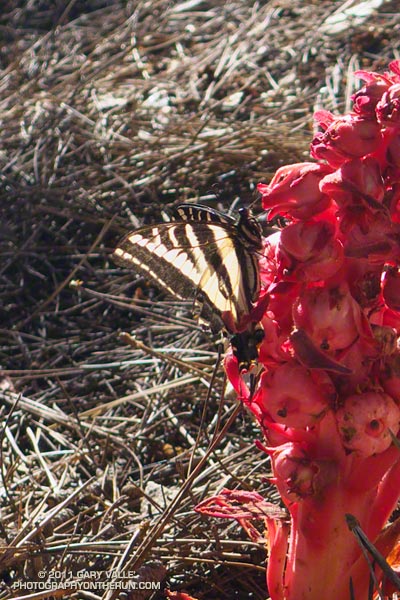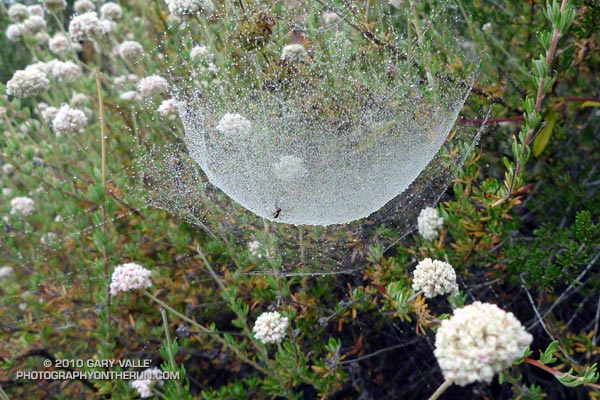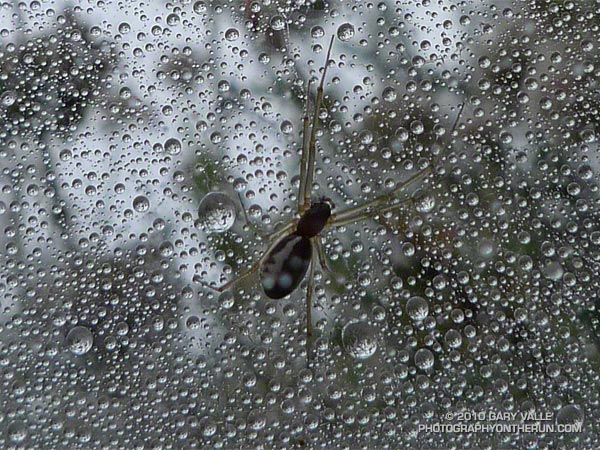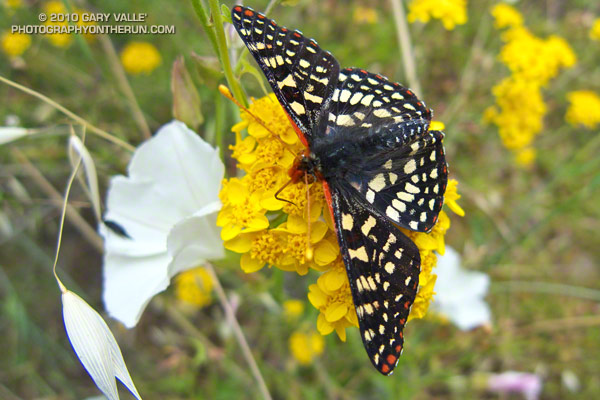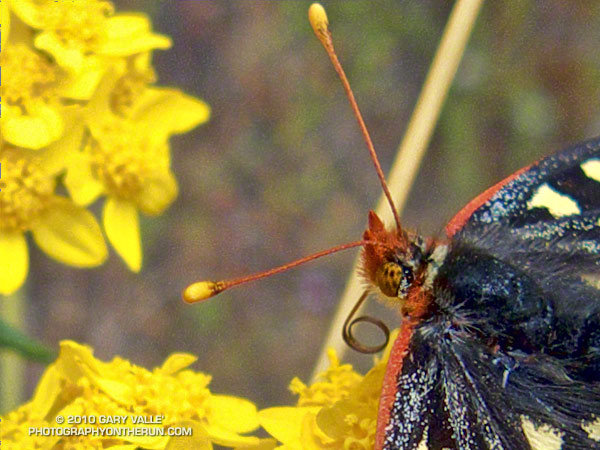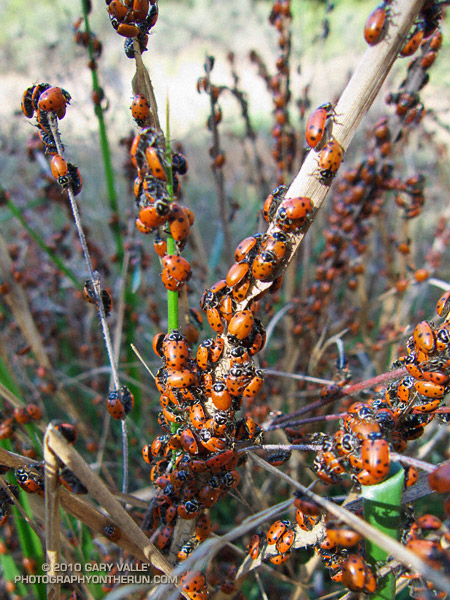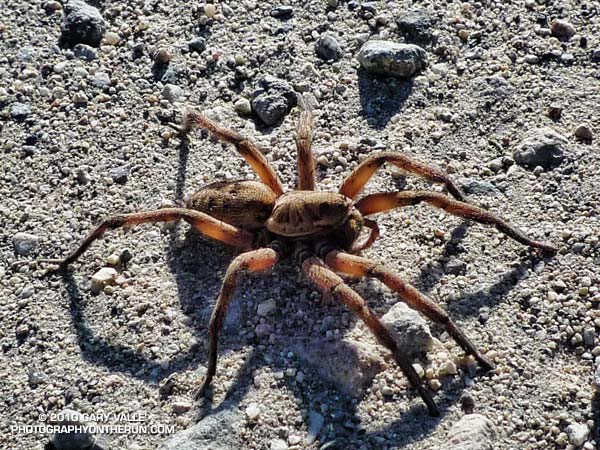
I’d just run up the long hill we call “The Beast,” and was running east on a relatively level stretch of gravelly dirt road on Lasky Mesa, when it’s movement caught my eye.
My first thought was “Tarantula!” but this spider was slightly smaller than a tarantula, and running. Tarantulas walk, they (usually) don’t run. This spider ran with a smooth, agile, articulated gait that must be the envy of the Arachnid world. I had never seen a spider like this, and started moving in its direction.
Lurking in the back of my mind was an experience I’d had with a tarantula, also on Lasky Mesa. In an attempt to redirect the tarantula from the margin of a dirt road, I’d blocked its intended path with my foot. This had worked a couple of times before, but this time the big spider briefly paused and then continued to walk toward my running shoe. My shoe was on top of some dried oak leaves, in the grass on the side of the road. I thought maybe if I rustled the leaves… with lightning speed the tarantula charged my foot, and I jumped the proverbial mile.
Today I was going to have to react quickly if I was going to get a photograph. As I started moving toward this unusual spider, it saw me, and increased its speed. I continued to move in its direction, and it suddenly began a series of bizarre, defensive leaps. In a couple of seconds, the spider did three exaggerated “accordion” leaps, extending vertically to the full length of its impossibly long legs. The motion was somehow reminiscent of the propulsive action of a jellyfish. It was unexpected, and very effective!
After that the spider hunkered down, but seeing how quickly it had moved, I only took photos from a “respectable” distance. I wasn’t real excited about putting my hand a couple of inches from its big fangs.
Saturday, I was running at Ahmanson with Brett, on Lasky Mesa, and shortly after telling him this story, he spotted the wolf spider (probably Schizocosa mccooki) pictured above!
Related post: Tarantula Time
